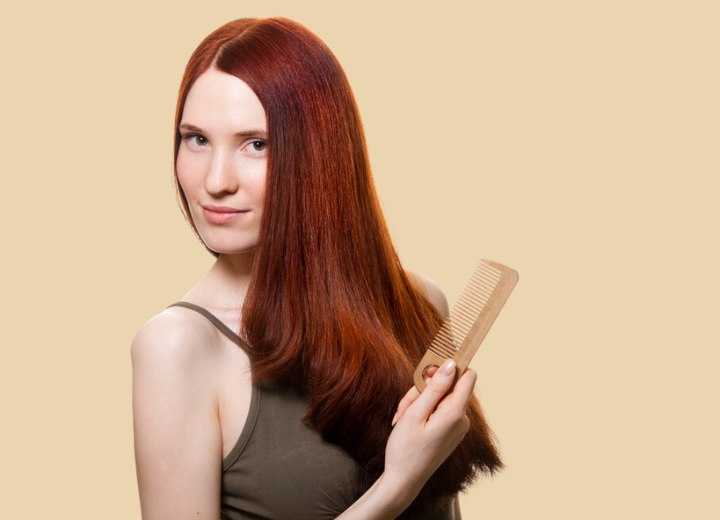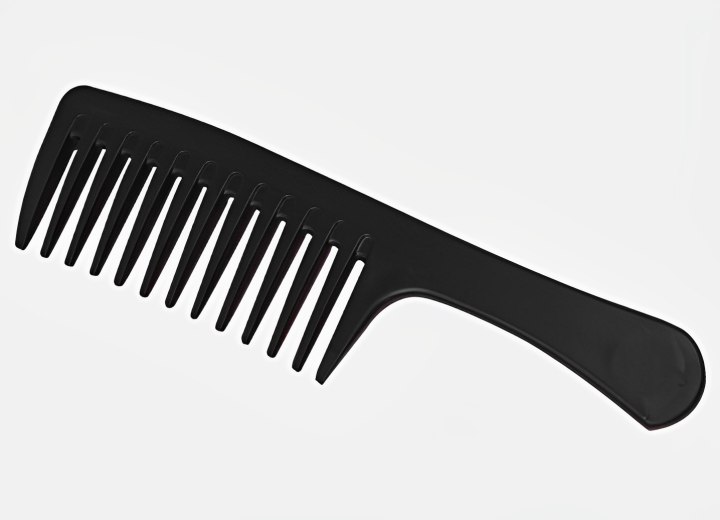Hair Combing and Brushing Basics

• You should brush your hair 100 strokes every night.
• Never brush your hair when it's wet, and never comb it when it's dry.
• Sharing combs and brushes can cause dandruff.
• Daily brushing helps hair grow faster.
• Brushing the hair is better for it than combing.
• You can train your hair to follow a style by combing it in that style every day.
You should brush your hair 100 strokes every night. Over-brushing the hair can lead to hair damage, such as split ends. If you are brushing your hair before bedtime, you should only brush it sufficiently to remove any tangles (doing so gently). You should also use a natural-bristle brush (such as boar's hair) and work from the ends of the hair up to the scalp.
Never brush your hair when it's wet, and never comb it when it's dry. This hearkens back to the days before we had "brushes" with tines. Bristled brushes by their very nature pull the hair in hundreds of slightly different angles as the brush passes through the hair. When the hair is wet, it is swollen and weaker, and brushing with bristled brushes can stretch and damage it.
It IS advisable to always use a wide-toothed comb on wet hair, but a brush that has widely spaced tines is an acceptable tool for detangling wet hair. As for combing dry hair, the idea was that a regular comb would snarl in long hair and worsen tangles. However, using a wide-toothed comb to detangle long hair is perfectly fine, as long as you always remember to treat the hair gently and with respect.

Sharing combs and brushes can cause dandruff. This is untrue. Dandruff is caused by a fungus that is found in everyone's hair. The difference between someone with dandruff and someone without dandruff is that the fungus responsible for dandruff isn't active in the person who doesn't have it. That being said, sharing combs and brushes isn't a good practice because there are many other things that can be spread by sharing these implements.
Daily brushing helps hair grow faster. There are benefits to brushing the hair that are proven, specifically when using a natural-bristle brush. Brushing helps to remove dirt and product buildup in the hair and from the scalp. It helps to distribute the natural oils produced by the follicles and glands of the scalp. It helps to stimulate the scalp to promote blood flow and regulate oil production. But there have never been any studies done that indicate daily brushing has any effect on the growth rate of the hair.
Brushing the hair is better for it than combing. This relates to our first myth at the top of the page. Your hair actually responds better to combing because it creates less stress on the hair and the stress it does generate is more uniform in nature.
Brushing the hair became popular because brushes tend to work faster at removing tangles and smoothing the hair, but whereas a comb has a single row of tines that separate the hair into small clusters of strands, a brush has several hundred bristles that separate the hair into several hundred strands. The brush, therefore, puts more stress on the hair itself.
You can train your hair to follow a style by combing it in that style every day. As nice as this would be if it were true, it isn't. This myth is generally proffered by those who wear short hairstyles (usually men). What generally happens is that it is the wearer of the style who becomes "trained" and finds it easier to create the desired look with his or her hair.
The application of moisture and heat can make physical changes in the wave pattern of the hair, and many times, by styling the hair immediately following a warm shampooing and conditioning, you will create the desired wave pattern in the hair which will "set" as the hair dries and cools.
Continue reading ... Last page